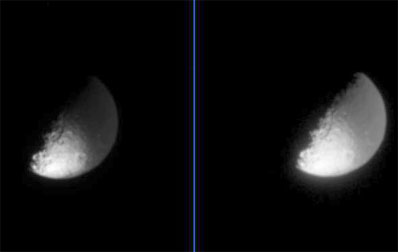Astronomy Picture of the Day
Discover the cosmos! Each day a different image or photograph of our fascinating universe is featured, along with a brief explanation written by a professional astronomer.
Posted on 09/07/2004 1:01:55 AM PDT by petuniasevan
Discover the cosmos! Each day a different image or photograph of our fascinating universe is featured, along with a brief explanation written by a professional astronomer.
Explanation: The closest and brightest supernova in over a decade was recorded just over a month ago in the outskirts of nearby galaxy NGC 2403. Officially tagged SN 2004dj, the Type IIP explosion likely annihilated most of a blue supergiant star as central fusion could no longer hold it up. The supernova can be seen as the bright star in the above image in the direction of the arrow. The home galaxy to the supernova, spiral galaxy NGC 2403, is located only 11 million light years away and is visible with binoculars toward the northern constellation of Camelopardalis (the Giraffe). The supernova is fading but still visible with a telescope, once peaking at just brighter than magnitude 12. Supernovas of this type change brightness in a predictable way and may be searched for in the distant universe as distance indicators.
The dark material that coats one hemisphere of Saturn's moon Iapetus is very dark, as these two processed views of the same image demonstrate.
 Credit: NASA/JPL/University of Arizona Download larger image version here |
The image was taken in visible light, with the Cassini spacecraft narrow angle camera from a distance of 2.9 million kilometers (1.8 million miles) from Iapetus, and at a Sun-Iapetus-spacecraft, or phase angle of 89 degrees. The image scale is 17 kilometers (11 miles) per pixel. The image has been magnified by a factor of four to aid visibility.
The Cassini-Huygens mission is a cooperative project of NASA, the European Space Agency and the Italian Space Agency. The Jet Propulsion Laboratory, a division of the California Institute of Technology in Pasadena, manages the Cassini-Huygens mission for NASA's Office of Space Science, Washington, D.C. The Cassini orbiter and its two onboard cameras, were designed, developed and assembled at JPL. The imaging team is based at the Space Science Institute, Boulder, Colo.

YES! You too can be added to the APOD PING list! Just ask!
Please add me to your APOD ping list.
In case you like astronomy, the prior comment offers a welcome astronomy picture of the day ping list.
Much broader than just the physics of the Stars interiors.
Also a terrific book:
100 Billion Suns: The Birth, Life, and Death of the Stars
by Rudolf Kippenhahn, Jean Steinberg (Translator)
lecture 14 is regarding the nuclear processes internal to a star with more detail than in the book I referenced above.
I've had already added Hyperphysics to my favorites. Thanks for the links.
Disclaimer: Opinions posted on Free Republic are those of the individual posters and do not necessarily represent the opinion of Free Republic or its management. All materials posted herein are protected by copyright law and the exemption for fair use of copyrighted works.